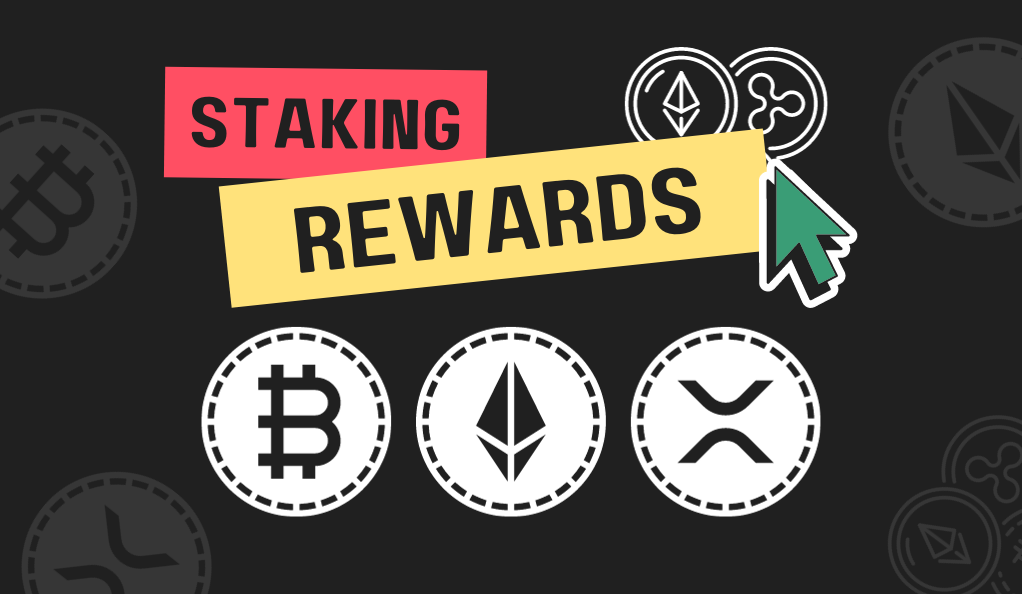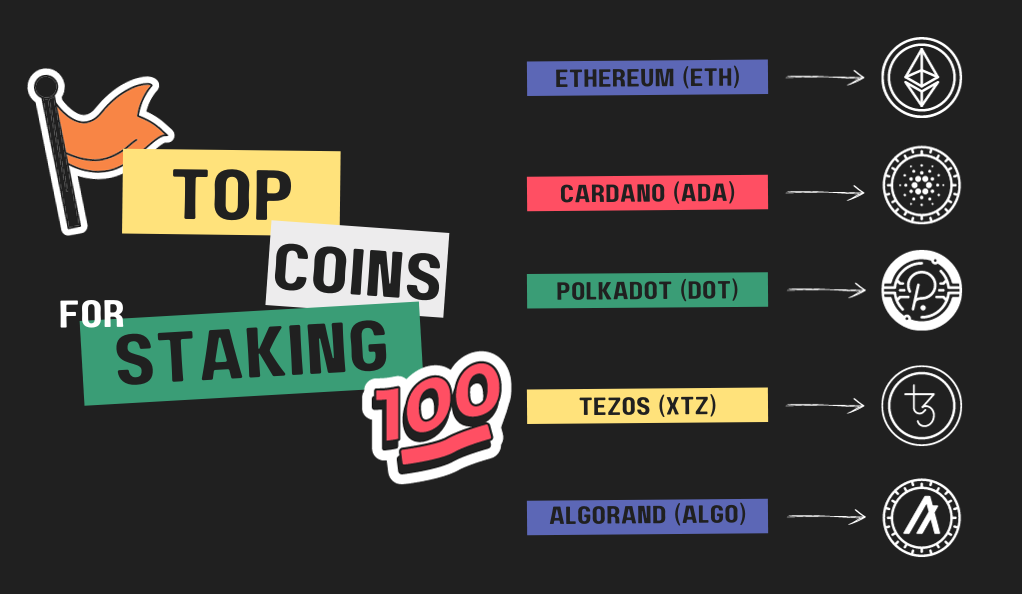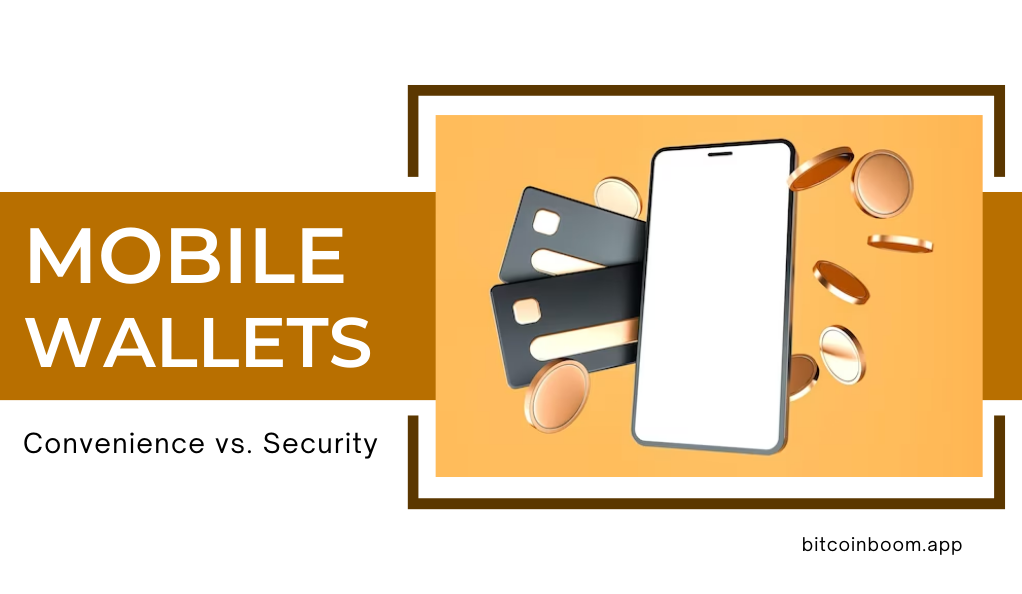In the ever-evolving world of cryptocurrencies, various methods have emerged for users to earn, trade, and invest. One such method that has gained significant traction in recent years is cryptocurrency staking. But what exactly is staking, and why is it becoming a popular choice among crypto enthusiasts? Let’s delve into the details.
What is Cryptocurrency Staking?
At its core, staking involves holding and locking up a certain amount of a cryptocurrency in a digital wallet to support the operations of a blockchain network. These operations can include validating transactions, securing the network, and maintaining the blockchain’s overall integrity. In return for this service, participants are often rewarded with additional coins, providing them with a source of passive income.
Why Stake Cryptocurrencies?
- Passive Income: Just like earning interest in a traditional bank, staking offers rewards in the form of additional coins. The more you stake and the longer you hold, the more you can potentially earn.
- Network Security: Staking helps in securing the blockchain network. Validators or stakers are incentivized to act honestly as they have a stake in the network. Any malicious activity could lead to their staked coins being taken away.
- Eco-friendly: Unlike cryptocurrency mining, which requires substantial computational power and energy, staking is a more energy-efficient process. It doesn’t rely on solving complex mathematical problems, making it a greener alternative.
- Increased Transaction Speed: With more participants staking, the blockchain network can achieve faster transaction validations.
Understanding Proof-of-Stake (PoS)

The blockchain world is built upon consensus mechanisms, which are protocols that ensure all transactions are verified and added to the blockchain in a manner that’s agreed upon by all participants. Two of the most prominent consensus mechanisms are Proof-of-Work (PoW) and Proof-of-Stake (PoS). While we touched upon them briefly in the introduction, let’s delve deeper into PoS, its advantages, and how it differs from PoW.
How Does PoS Work?
- Becoming a Validator: To participate in the PoS mechanism, users lock up a certain amount of their cryptocurrency as a stake. This acts as collateral and a sign of good faith.
- Creating New Blocks: Instead of competing to solve puzzles, validators are chosen to create new blocks based on various factors, including the amount of cryptocurrency they’ve staked, the length of time they’ve held it, and other determinants depending on the specific blockchain.
- Earning Rewards: For every block validators create, they receive a reward in the form of additional cryptocurrency. This is similar to how miners are rewarded in PoW, but without the massive energy expenditure.
| Criteria | Proof-of-Work | Proof-of-Stake |
|---|---|---|
| Energy Efficiency | Consumes high energy due to mining processes. | More energy-efficient as it doesn’t require mining. |
| Security | Secure but susceptible to 51% attacks. | Secure, with stakers’ collateral discouraging malicious actions. |
| Rewards | Miners earn rewards for solving puzzles. | Validators earn rewards based on staked amount and block creation. |
| Entry Barrier | Requires high-end hardware for mining. | Requires holding and staking a certain amount of cryptocurrency. |
How Staking Works?
Having understood the foundational concept of Proof-of-Stake, it’s crucial to delve into the practicalities of staking. How does one actually stake their cryptocurrencies, and what are the processes involved? Let’s break it down step by step.
The Essence of Staking
At its core, staking is akin to a bank fixed deposit. You lock up a certain amount of your cryptocurrency to support a blockchain network’s operations, and in return, you earn rewards. However, unlike traditional banking, staking operates in a decentralized environment, ensuring more transparency and often, higher returns.
Steps to Begin Staking
- Choose a Cryptocurrency: Not all cryptocurrencies support staking. It’s essential to select a coin that operates on a Proof-of-Stake or a similar consensus mechanism. Popular staking coins include Ethereum (soon transitioning to PoS), Cardano, and Polkadot.
- Select a Wallet: To stake, you’ll need a digital wallet that supports the chosen cryptocurrency and its staking features. Some popular options include Ledger, Trust Wallet, and Metamask.
- Decide on the Staking Method:
- Solo Staking: Here, you stake on your own, becoming a full node to validate and create blocks. This method often requires a significant amount of cryptocurrency and technical know-how.
- Staking Pools: If you don’t have enough coins to stake solo, you can join a staking pool where multiple participants combine their coins to increase their chances of validating a block. Rewards are then distributed proportionally based on individual contributions.
- Lock Up Your Coins: Once you’ve decided on the method, the next step is to lock up (or “stake”) your coins. This period can vary from a few days to months, depending on the cryptocurrency and your preferences.
- Earn Rewards: Once your coins are staked, you’ll start earning rewards, typically in the form of additional coins. The frequency and amount of these rewards can vary based on the staked amount, staking duration, and the specific blockchain’s protocol.
- Unstaking and Withdrawal: After the staking period ends, or if you decide to end it prematurely (if the protocol allows), you can “unstake” your coins. It’s essential to note that some networks might have a cooldown period before you can access your staked coins and rewards.
Factors Influencing Staking Rewards
- Amount of Cryptocurrency Staked: Generally, the more you stake, the higher your potential rewards.
- Staking Duration: Longer staking durations often yield better rewards.
- Network Inflation: Some networks have set inflation rates that determine annual staking rewards.
- Total Staked Coins: If a large percentage of a cryptocurrency’s total supply is staked, the rewards might be distributed among a larger pool, potentially reducing individual rewards.
Risks and Safety of Staking
While staking cryptocurrencies offers a promising avenue for earning passive income, it’s essential to approach it with a clear understanding of the associated risks. Ensuring the safety of your investments requires a combination of knowledge, diligence, and sometimes, a bit of caution. In this section, we’ll explore the potential risks of staking and provide tips on how to mitigate them.
Potential Risks of Staking
- Market Volatility: The value of cryptocurrencies can be highly volatile. If the price of the staked coin drops significantly, it might diminish the worth of both your principal and rewards.
- Lock-up Periods: Staking often requires you to lock up your coins for a set duration. During this period, you won’t be able to sell or trade them, potentially missing out on other lucrative opportunities.
- Slashing: In some PoS networks, validators who fail to perform their duties correctly or act maliciously can face penalties. This process, known as slashing, can result in a loss of a portion or all of the staked amount.
- Platform Risks: If you’re using a staking service or platform, there’s always a risk of the platform being hacked, going offline, or facing other technical issues.
- Regulatory Risks: The regulatory environment for cryptocurrencies is still evolving. Changes in regulations or government policies can impact staking rewards or the overall feasibility of staking in certain jurisdictions.
Safety Tips for Staking
- Do Your Research: Before staking any cryptocurrency, thoroughly research the coin, its staking protocol, and the platform you’re considering. Look for established coins with a strong community and transparent governance.
- Diversify: Just as with any investment, don’t put all your eggs in one basket. Consider staking multiple cryptocurrencies to spread the risk.
- Use Hardware Wallets: If you’re staking independently, consider using a hardware wallet. These wallets, also known as cold wallets, are not connected to the internet, offering an added layer of security against hacks.
- Stay Updated: The world of crypto is dynamic. Regularly check for software updates if you’re running a validator node. Also, stay informed about the latest news related to your staked cryptocurrency and any regulatory changes.
- Avoid Overcommitting: Only stake an amount you’re comfortable locking up for an extended period. Ensure you have sufficient liquidity for your other financial needs.
- Engage with the Community: Join forums, discussion groups, or social media communities related to your staked cryptocurrency. Engaging with fellow stakers can provide valuable insights, tips, and timely updates.
Potential Staking Rewards

One of the primary attractions of staking cryptocurrencies is the potential to earn rewards. These rewards serve as an incentive for participants to support and secure the network. However, the amount and frequency of these rewards can vary based on several factors. In this section, we’ll delve into the dynamics of staking rewards and how they’re determined.
Understanding Staking Rewards
Staking rewards are essentially the returns you earn for locking up your cryptocurrency to support a blockchain network. They can be viewed as the interest earned on a traditional bank deposit, but often at much higher rates. These rewards are typically paid out in the same cryptocurrency that you’ve staked.
Factors Determining Staking Rewards
- Amount Staked: Generally, the more cryptocurrency you stake, the higher your potential rewards. This is because your stake represents a larger share of the network, and thus, you’re entitled to a more significant portion of the rewards.
- Duration of Staking: Some networks offer higher rewards for longer staking durations, incentivizing participants to support the network over extended periods.
- Network Inflation: Certain cryptocurrencies have a predetermined inflation rate, which can influence the annual staking rewards. Higher inflation might mean more coins are distributed as rewards, but it could also lead to a decrease in the coin’s value.
- Total Network Participation: If a large percentage of a cryptocurrency’s total supply is staked, the rewards might be distributed among a larger pool of participants, potentially reducing individual rewards.
- Validator Performance: For networks where participants run validator nodes, the performance and uptime of the node can influence rewards. Nodes that are consistently online and validate transactions correctly might earn higher rewards than those with frequent downtimes.
Estimating Potential Rewards
Many staking platforms and PoS networks provide staking calculators, tools that allow you to estimate potential rewards based on the amount you plan to stake and the expected duration. These calculators factor in current network conditions and historical data to provide an estimate. However, it’s essential to remember that these are just estimates, and actual rewards can vary.
Tax Implications of Staking Rewards
It’s crucial to note that in many jurisdictions, staking rewards are considered taxable income. The specifics can vary based on local regulations, but generally, you’re required to report your rewards and pay taxes based on their value at the time of receipt.
Staking Fees and Regulations
As with many financial ventures, staking isn’t free from associated costs and regulatory oversight. While the rewards can be lucrative, it’s essential to factor in the fees that might be deducted and to be aware of the regulatory landscape surrounding staking. In this section, we’ll explore both these aspects in detail.
Understanding Staking Fees
When you stake your cryptocurrencies, especially through platforms or staking pools, there might be associated fees. These fees can vary based on the platform and the cryptocurrency being staked. Here are some common types of fees you might encounter:
- Validator Fees: If you’re staking on a network where you run a validator node, there might be costs associated with setting up and maintaining the node, including hardware costs, electricity, and internet charges.
- Platform Fees: Many staking platforms or services charge a fee for the convenience they offer. This fee is typically a percentage of the staking rewards earned.
- Withdrawal Fees: Some platforms might charge a fee when you decide to unstake your coins or withdraw your rewards.
- Network Fees: Transactions on blockchain networks, including staking and unstaking actions, often come with network fees. These fees compensate for the computational energy required to validate and record the transactions.
- Slippage: If you’re using a decentralized platform or exchange to stake, there might be a slippage cost, which is the difference between the expected price of a trade and the price at which the trade is executed.
Navigating the Regulatory Landscape
Staking, like other cryptocurrency activities, is subject to regulatory oversight in many countries. Here’s what you need to know:
- Taxation: As mentioned earlier, staking rewards are often considered taxable income in many jurisdictions. It’s essential to report these rewards and pay the necessary taxes.
- Disclosure Requirements: Some countries might require individuals or entities engaged in staking (especially large-scale or commercial staking) to disclose their activities to regulatory bodies.
- Securities Regulations: In certain jurisdictions, staked tokens, especially those that offer voting rights or a share in the platform’s decision-making, might be classified as securities. This classification can bring additional regulatory requirements.
- Anti-Money Laundering (AML) and Know Your Customer (KYC) Regulations: Platforms offering staking services might be required to implement AML and KYC procedures, ensuring that the platform isn’t used for illicit activities.
Cryptocurrency Staking Insurance
As the world of cryptocurrency staking continues to grow, so does the need for mechanisms to protect stakers from potential losses. One such emerging solution is cryptocurrency staking insurance. In this section, we’ll delve into what staking insurance entails, its benefits, and how to navigate this relatively new offering in the crypto space.
What is Cryptocurrency Staking Insurance?
Cryptocurrency staking insurance is a protective measure designed to cover potential losses that stakers might face due to unforeseen events. These events can range from platform hacks, smart contract failures, to slashing penalties in certain PoS systems.
Why Consider Staking Insurance?
- Protection from Hacks: Even the most secure platforms are not immune to potential breaches. Insurance can offer compensation if a platform is hacked and staked coins are stolen.
- Mitigating Slashing Risks: In some PoS systems, if a validator node doesn’t perform its duties correctly, a portion of the staked coins can be slashed as a penalty. Insurance can cover these potential losses.
- Smart Contract Failures: Smart contracts, while robust, can sometimes have vulnerabilities. Insurance can provide coverage against losses resulting from such failures.
- Peace of Mind: Knowing that your staked assets are insured can provide peace of mind, allowing you to focus on maximizing returns without constantly worrying about potential risks.
How Does Staking Insurance Work?
- Policy Purchase: Just like traditional insurance, stakers can purchase a policy that covers specific risks associated with their staking activities.
- Claim Process: In the event of a covered loss, stakers can file a claim with the insurance provider. After verifying the claim’s legitimacy, the insurer compensates the staker as per the policy’s terms.
- Premiums: Stakers pay premiums to maintain their insurance coverage. These premiums can vary based on the coverage amount, duration, and the risks insured against.
Choosing the Right Staking Insurance
- Understand the Coverage: Not all insurance policies are created equal. It’s essential to understand what specific risks a policy covers and any potential exclusions.
- Reputation of the Insurer: Opt for insurance providers with a solid reputation in the crypto space. Look for reviews, testimonials, and any past instances of claim settlements.
- Cost vs. Benefit Analysis: Evaluate the insurance premiums against the potential benefits. While insurance provides added security, it’s crucial to ensure that the costs don’t outweigh the potential benefits.
- Terms and Conditions: Always read the fine print. Understand the claim process, any waiting periods, and other terms that might affect your coverage.
Best Coins and Platforms for Staking
The allure of earning passive income through staking has led to a surge in both the number of cryptocurrencies offering staking and platforms facilitating it. However, with a plethora of options available, how does one decide where to stake? In this section, we’ll highlight some of the top coins and platforms for staking, based on their reputation, rewards, and security features.
Top Coins for Staking

- Ethereum (ETH): As Ethereum transitions to Ethereum 2.0 with a Proof-of-Stake consensus mechanism, it has become one of the most anticipated coins for staking. With its vast ecosystem and widespread adoption, staking ETH can be a lucrative option.
- Cardano (ADA): Known for its research-driven approach, Cardano offers an attractive staking model with competitive rewards and a strong focus on sustainability.
- Polkadot (DOT): Polkadot’s unique multi-chain structure allows for inter-chain operability, and its staking model offers substantial rewards for validators and nominators.
- Tezos (XTZ): Tezos uses a Liquid Proof-of-Stake mechanism, allowing holders to delegate their staking rights to others without transferring ownership. It has consistently offered attractive staking rewards.
- Algorand (ALGO): With its Pure Proof-of-Stake consensus, Algorand ensures that every coin in the network has a chance to earn rewards, making it an inclusive staking option.
Top Platforms for Staking
- Binance Staking: As one of the world’s largest cryptocurrency exchanges, Binance offers a user-friendly staking platform with a wide range of supported coins and competitive rewards.
- Kraken: Known for its security features, Kraken provides on-exchange staking services for several cryptocurrencies, allowing users to earn rewards while keeping their assets on the exchange.
- Stake.Fish: A popular staking service provider, Stake.Fish supports multiple cryptocurrencies and is known for its transparency and security measures.
- Ankr: Ankr provides decentralized staking services, allowing users to stake multiple cryptocurrencies in one place. It offers a user-friendly interface and detailed analytics on staking performance.
- MyCointainer: This platform simplifies the staking process, making it accessible even for beginners. It supports a wide range of coins and offers both staking and masternode services.
Factors to Consider When Choosing a Staking Option
- Rewards: While rewards are a significant attraction, it’s essential to understand how they’re calculated and the average yield for each coin or platform.
- Security: Ensure that the coin or platform you choose has robust security measures in place. If using a staking service, check for insurance coverage and past security incidents.
- Liquidity: Consider the lock-up periods and how easily you can unstake and access your coins.
- Community and Support: A strong community and responsive support can be invaluable, especially if you’re new to staking.
- Fees: Be aware of any fees associated with staking, including platform fees, validator fees, and network fees.
Conclusion
Cryptocurrency staking, with its allure of passive income and active contribution to blockchain ecosystems, has firmly established itself as a cornerstone of the decentralized finance (DeFi) movement. As we’ve journeyed through this guide, it’s evident that while staking offers numerous benefits, it also comes with its own set of challenges and considerations. From understanding the foundational principles of Proof-of-Stake to navigating the intricate web of rewards, fees, and regulations, successful staking requires a blend of knowledge, diligence, and strategic decision-making.
As the crypto world continues to evolve, staking will undoubtedly play a pivotal role in shaping the future of digital assets and decentralized networks. Whether you’re a seasoned crypto enthusiast or a newcomer to this space, the key lies in staying informed, being adaptable, and always prioritizing the security and integrity of your investments. In the dynamic realm of cryptocurrencies, staking isn’t just an opportunity to earn; it’s a testament to the collective belief in a decentralized and democratized financial future. Happy staking!




